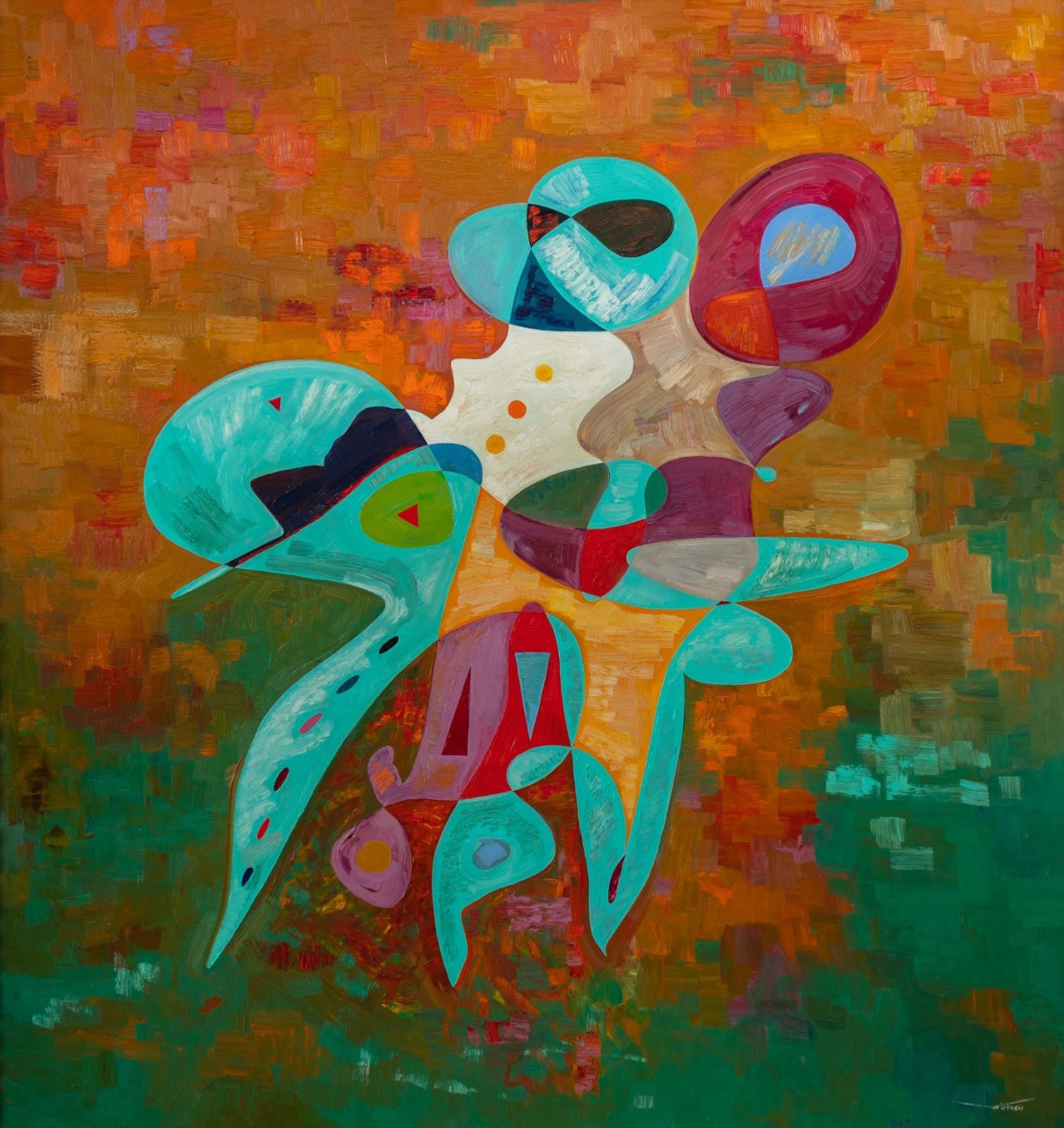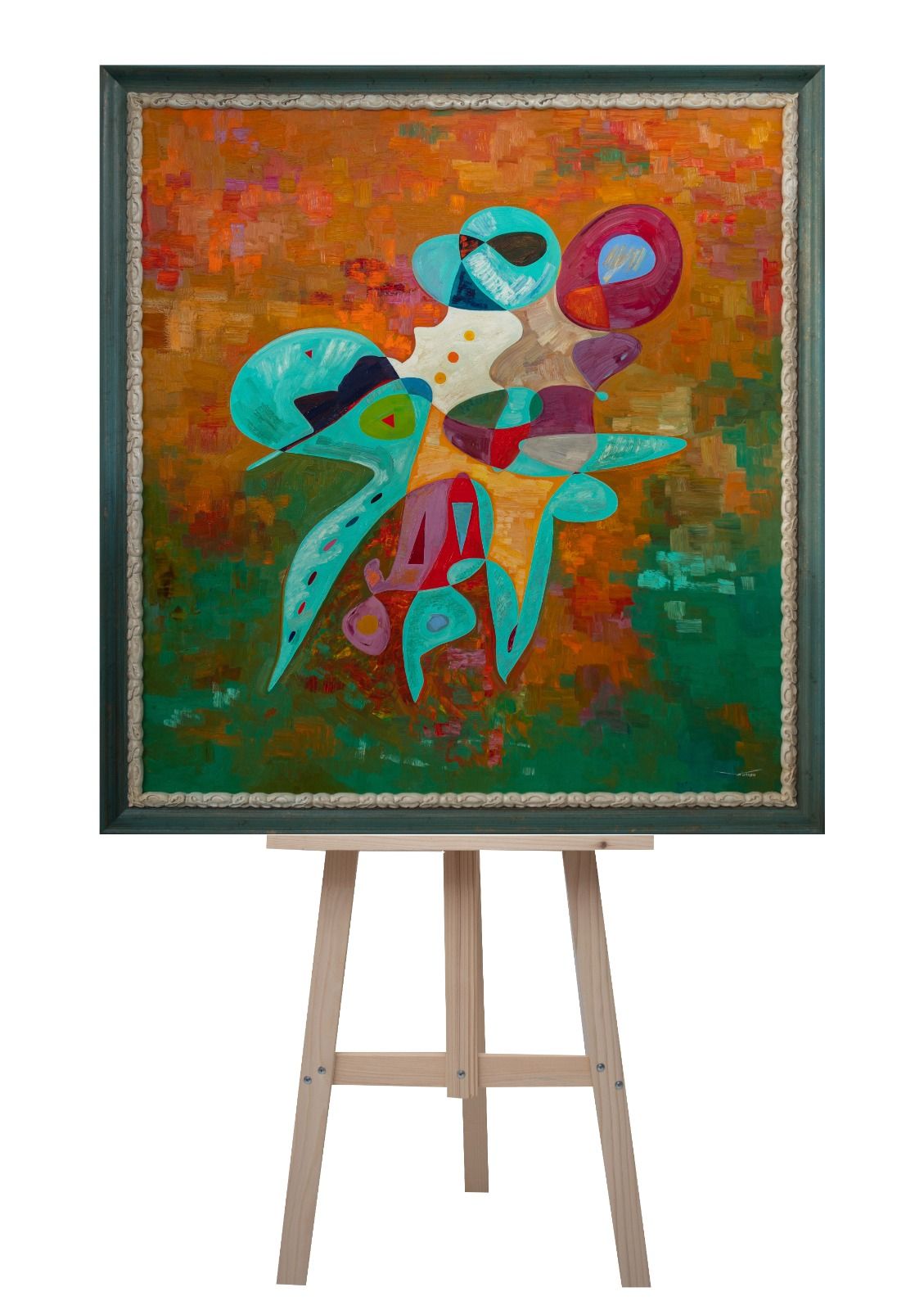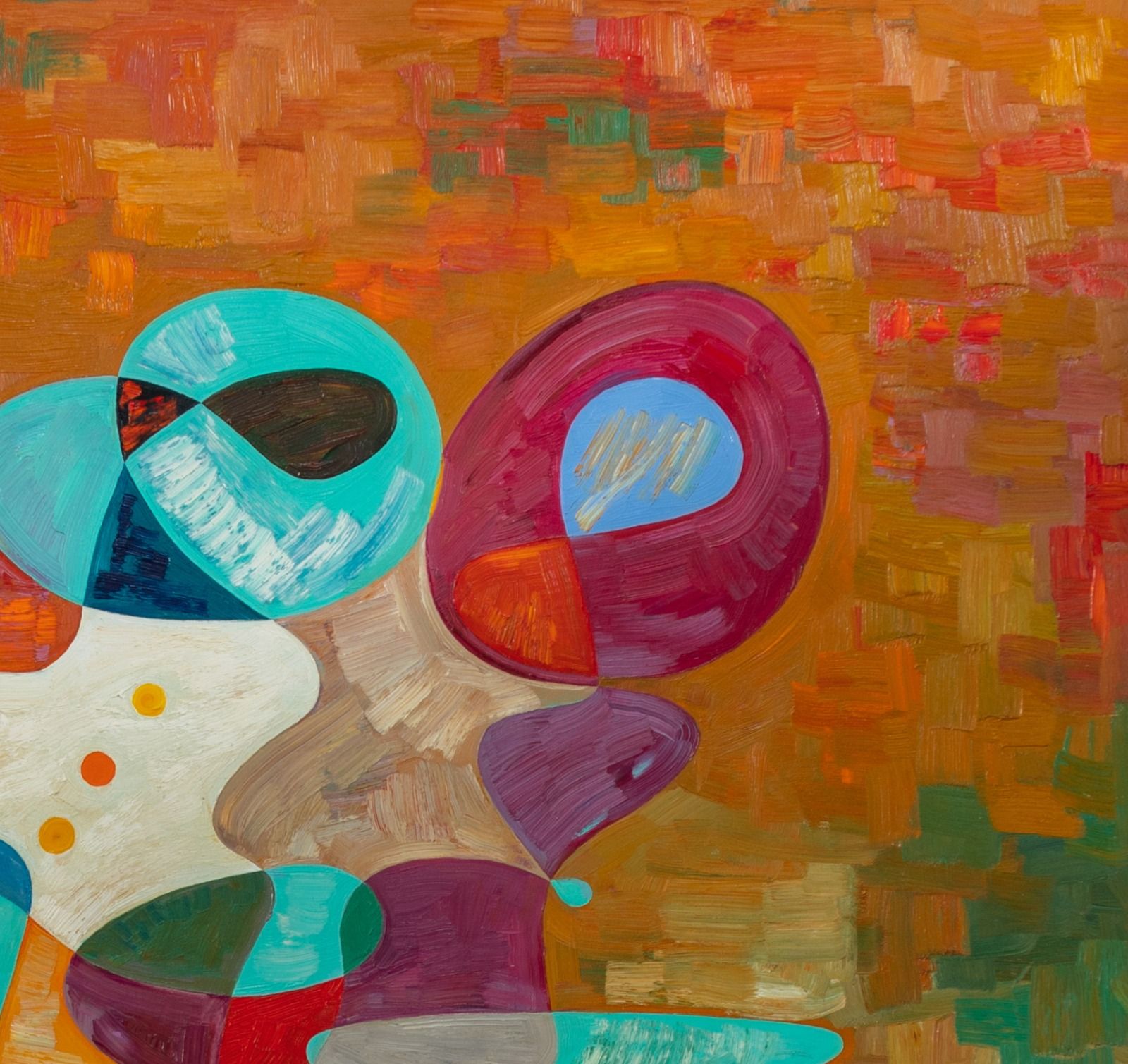

-
Year 2015
-
150x138 Cm / 59x54 In
-
Oil / Acrylic Base / Linen Canvas
-
Original Edition

Eva and Juan Peron (2015)
-
Year 2015
-
150x138 Cm / 59x54 In
-
Oil / Acrylic Base / Linen Canvas
-
Original Edition
-
Sold
Eva And Juan Peron (2015) oil painting Description
The contemporary art world, known for its aesthetic and critical inquiries of the process of distortion that fame generates, often caused rampant misunderstandings and forced invisibility onto those on the margins. Coming out of the fringes on his own terms, Vîrtosu deals with these issues of misrepresentation by means of restating the myths that created, one by one, our history. The artist presents his voice, experiences, and concerns in an abstract language suited for a flexible approach, one that makes space for differences.
Eva Perón was the wife of Argentine President Juan Perón and the First Lady of Argentina. Fondly known as Evita, she played a major role in her husband's administration. She is widely remembered for her efforts to help the poor and for her role in helping women win the right to vote. Her life has been well-documented over the years – in articles, documentaries, a 1979 Tony Award-winning Broadway play, and a 1996 big-screen musical, starring another diva, Madonna. But the details of her demise – an early and tragic one, at age 33 – may be the most fascinating part of her story. It includes a top-secret lobotomy, as well as the disappearance of her corpse for 16 years.
Could Eva’s inflammatory statements have led to civil war? Juan Perón may have thought so, and with good reason. As First Lady of Argentina, Eva was more than fashionable arm candy. Perón may have been president and leader of the Peronist party, but his wife also possessed a great deal of power.
Vîrtosu considers the status of the outsider, the isolated one in varying ways, often depicting obscured identities belonging to the world. His subjects are either exiled floating figures or concealed individualities that hold within themselves a sense of sequestration. Whether he refers to Giorgio Agamben or strictly to a psychological perspective, the artist definitely examines what we may recall as “nude life”, one that pins down the difference between a pure functionality of the body and its noble divine “coating”. As we can recall, “through sin, humanity becomes visible as a body without glory”, and Vîrtosu’s series of “Great World Personalities” rewrites life stories in that undertone.
His work became distinctive through the isolating component of individuality. Vîrtosu’s art in fact actively omits the familiar figures and rich appearances occupy the space. These staged scenes are devoid of people per-se and strongly evoke a sense of loss – the viewer can feel the missing presence of the suggested narrator. Vîrtosu’s crafted stories conjure reflection on the Argentinian icon, stepping in the shoes of both the outsider looking in and the insider looking out.
Culture blooms best where the realities of people’s lives meet the discipline of artists’ creativity, building a conversation that bridges across nationalities, ethnicities, generations and social standing. While identity issues are far too complex to be neatly summarized in art, Vîrtosu provides a vital glimpse into the narrative of the “other”– specifically the under-recognized perspectives of history. It is important that this narrative exists and that it be widely consumed to begin to undo the staggering injustice of mis- and underrepresentation that is the current norm.
Vîrtosu's experience is exactly alike, and thus that reality bleeds into visual narrative forms in different ways. In presenting multiple narratives, Vîrtosu explores not only the particular tensions and challenges of these culturally and socially under-recognized groups but also the ways in which we are accustomed to interacting with presentations of the other. Void of the voice of the mainstream, Vîrtosu finally asserts himself on a platform of his own making.
-
Art Advisory Services



read more